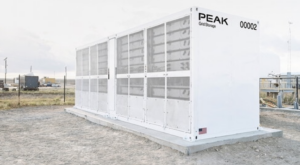Ohio regulators have approved construction of a 200-MW natural gas-fired power plant in Licking County, a project designed to provide electricity for an affiliate of tech company Meta.
The Ohio Power Siting Board (OPSB) on June 9 gave the go-ahead for the Socrates South Power Generation Project in New Albany, in the heart of the state’s growing data center industry. Will-Power OH, a subsidiary of The Willliams Companies, will build and operate the plant. The facility will supply energy exclusively to Sidecat, part of Meta Platforms. Sidecat owns a 740-acre industrial campus in the New Albany Business Park.
New Albany is home to a number of major data center developments, including facilities operated by Google, Amazon Web Services, and Microsoft.
Want to learn more about artificial intelligence in the power industry, and how energy demand from data centers is impacting electric utilities and the power generation sector? Register to attend POWER’s Data Center POWER eXchange event, set for Oct. 28 in Denver, Colorado.
Sidecat has developed several data centers located in the New Albany complex. The new power plant, with a 20-acre footprint, will be built adjacent to a Sidecat data center currently under construction at the site. The OPSB in a news release said the Socrates station “will operate ‘behind-the-meter’ to serve the electric load of an adjacent data center and will not be physically connected to the electric power grid.” The agency said the “natural gas supply for the generation facility will come from two 24-inch diameter gas pipelines that will be the subject of future applications with the OPSB.”
“Dispatchable behind-the-meter generation is becoming essential for data centers to ensure reliability and meet the accelerated timelines driven by AI and cloud growth,” Pete DiSanto, EVP of Data Center Development at Enchanted Rock, told POWER. “But when that capacity operates in isolation, it represents a missed opportunity to strengthen the grid, accelerate renewable adoption and provide greater overall system flexibility. Purpose-built, dual-purpose solutions can deliver both critical resilience for data center operations and valuable grid services during peak demand and times of need.”
$1.6-Billion Investment
Officials on Monday said the plant is expected to cost about $1.6 billion to build, and eventually will include two power stations, each with 200 MW of generation capacity. Williams also plans to build a substation at the site. Construction is expected to begin this summer, with an estimated completion date in the third quarter of next year.
Meta has had a presence at the New Albany Business Park since 2017 and began operating a data center campus there in 2020. The company announced an expansion at the site in April 2022.
EdgeConneX, another data center developer, earlier this year said it start construction of a 120-MW gas-fired power plant to provide energy for a planned data center at the New Albany complex. The company said that power station could begin operating as soon as early next year.
Jim McMahon, Energy Practice Leader at Charles River Associates, a global research and consulting firm, told POWER the Ohio project “is another good example of how hyperscalers are no longer relying on the grid to meet their energy needs. The shift toward BTM [behind the meter] development is a fundamental change in how energy infrastructure is being developed. It’s faster, more self-contained, and increasingly disconnected from RTO planning processes.
“Second, the project demonstrates how hyperscalers like Meta are effectively creating their own vertically integrated utility footprints, which raises some really interesting questions about how the role of traditional utilities and centralized planning will evolve.”
McMahon added that “despite hearing about the death of gas and terminal valuations for several years, this clearly reinforces the point that natural gas remains a critical enabling technology for data center reliability and growth. There will be tension with renewables of course.” McMahon also said that “beyond the utility-specific planning challenges this creates, it also creates challenges for the RTO [regional transmission organization] and RA [resource adequacy] planning. If states step in and procure long-term capacity in PJM for future load growth, for instance, could that create stranded cost risks if data centers find their own BTM sources of supply?
“Finally, I think there is an interesting possibility of new micro energy ecosystems being built out in certain regions [like New Albany] as data centers concentrate and look to local alternatives for meeting energy demand,” said McMahon. “That could ultimately upset utility plans to capitalize on some of this growth nationwide.”
—Darrell Proctor is a senior editor for POWER.










